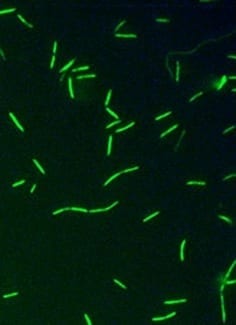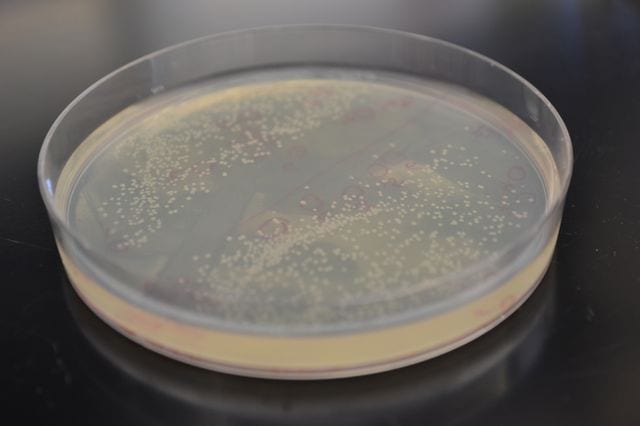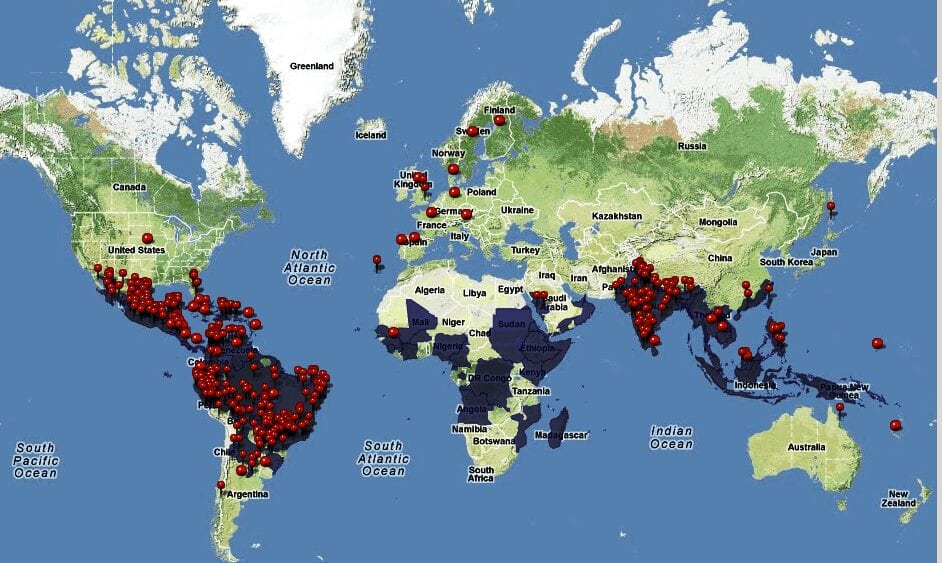
Biologist Cui Qiu manipulates genes of little-known bacteria to make them superstars of fuel production.
In one recent achievement, Cui, a researcher with the Chinese Academy of Sciences‘ Qingdao Institute of Bioenergy and Bioprocess Technology, turned a few shy members of the clostridium germ family into highly productive workers. Some chewed up wood fibre and churned out sugar, while others ate the sugar and made ethanol. These small creatures would bring huge changes to the world, Cui says.
In science fiction movies, scientists manipulate genes of tiny organisms to create powerful new life forms. How do you feel when working in the laboratory?
Dealing with bacteria is not always as easy as it seems in the cinema. Indeed, for a few bacteria such as E coli, we now have a lot of knowledge and tools. E coli, for instance, has been studied by many scientists for a very long time. We know the function and role of almost every one of its genes, and many tools have been developed for genetic engineering. With these bacteria, scientists can indeed do almost everything at will. But the ones we are familiar with account for only a tiny, tiny, tiny fraction of all microorganisms. Most germs live and thrive in ways far beyond our grasp. Clostridium, for instance, was extremely difficult to deal with. Before our research, scientists knew very little about the function of its genes and there were no effective tools to use. The knowledge we had of E coli and the methods we used with it could not be applied to clostridium because they are as different as crocodiles and pigs. A chemical injection that enlivens E coli might very well kill clostridium. With every new bacterium, researchers have to start from scratch. A sense of defeat is more common than a sense of power.
What are the technological challenges that limit the production and use of biofuel generated by bacteria? How long do I need to wait before my car can be filled with germ-made fuel?
I don’t think the technology is a problem. Scientists have turned numerous microorganisms into impressive producers of biofuel that are highly efficient from the perspective of energy conversion. The biggest issue today is cost. The price for a tonne of ethanol, for instance, is less than 5,000 yuan (HK$6,332). If ethanol is produced from sugar using traditional methods, the sugar alone would cost more than 6,000 yuan. Our new method with clostridium could reduce the sugar requirement and bring the total cost close to ethanol’s market price. But then there is no profit. A biofuel must be able to compete with fossil fuels, such as petrol. But there is hope. Fossil fuel resources are declining and leading to more and more complaints about pollution and the price rises are basically irreversible. The higher the cost of fossil fuel, the more demand there is for various biofuels.
What about clostridium? Why did you choose it?
The clostridium name is derived from the Greek word for “spindle” because it has cells similar in shape to a rod. Scientists have known about it for a long time, as it occurs in rotting wood. Scientists found it had a particular taste for wooden fibre. But the natural species was not suitable for industrial-level production of biofuel because it died easily in a heated environment, consumed certain types of wooden fibre and produced ethanol slowly. But I was quite intrigued by the bacterium and gave it a chance.
The Latest on: Productive Biofuel Sources
[google_news title=”” keyword=”Productive Biofuel Sources” num_posts=”10″ blurb_length=”0″ show_thumb=”left”]
via Google News
The Latest on: Productive Biofuel Sources
- Soaring imports for green diesel disrupt U.S. soy marketon April 27, 2024 at 3:01 am
Companies are closing soybean crushing facilities for longer as used cooking oil and other ingredients are being imported for biofuel production.
- Researchers seek to scale ‘yeast fuel’ productionon April 26, 2024 at 7:34 am
Scientists at Thailand’s Chulalongkorn University say yeast and agricultural waste will play a key role in the development of renewable jet fuel for the aerospace industry ...
- India lets oil firms procure extra ethanol from sugar mills, source sayson April 24, 2024 at 7:42 am
India has agreed to allow oil marketing companies to procure ethanol by diverting an extra 800,000 metric tons of sugar for biofuel production, a government source said on Wednesday.
- Yeast Fuel, Developed by Chula's Faculty of Science Soon to Expand Its Production for the Aerospace Industryon April 23, 2024 at 9:27 am
Researchers from Chulalongkorn University have made use of forage grass to feed microorganisms and convert the resulting fat into jet fuel. They aim to expand petroleum-based oil replacement ...
- The criticality of biofuels and their impact on India's economy and ecologyon April 22, 2024 at 11:12 pm
India can reduce its dependence on imported fossil fuels by adopting production of biofuels thereby enhancing energy security and mitigating economic risks.
- Chula's Yeast Fuel to Expand Production for the Aerospace Industryon April 22, 2024 at 9:05 pm
Chula researchers use forage grass to feed microorganisms and convert the resulting fat into jet fuel aiming to replace petroleum-based energy and reduce impacts on human health and the environment BA ...
- Budget supports biofuelon April 18, 2024 at 3:38 pm
Canada's biofuel groups and oilseed crushers are pleased with what it saw in the federal government's 2024 budget. "The best way to describe ...
- UNILORIN Don Produces Biodiesel From Egg Shellson April 15, 2024 at 9:27 pm
A professor of chemical engineering at the University of Ilorin (UNILORIN) in Kwara State, Elizabeth Odetoye, has produced biodiesel through the exploration ...
- UNILORIN lecturer produces biodiesel from eggshellson April 15, 2024 at 1:01 pm
A\xa0 Professor of Chemical Engineering at the University of Ilorin, Kwara State, Elizabeth Odetoye, has produced biodiesel through the exploration of chicken eggshell-derived heterogeneous ...
- Exclusive: Eni aims to sell stakes in biofuel, bioplastic units by year-end, sources sayon April 15, 2024 at 8:23 am
opens new tab aims to sell by year-end minority stakes in its biofuel and bio-plastic units that could fetch around 1.3 billion euros in total to speed up its energy transition, three sources said.
via Bing News










